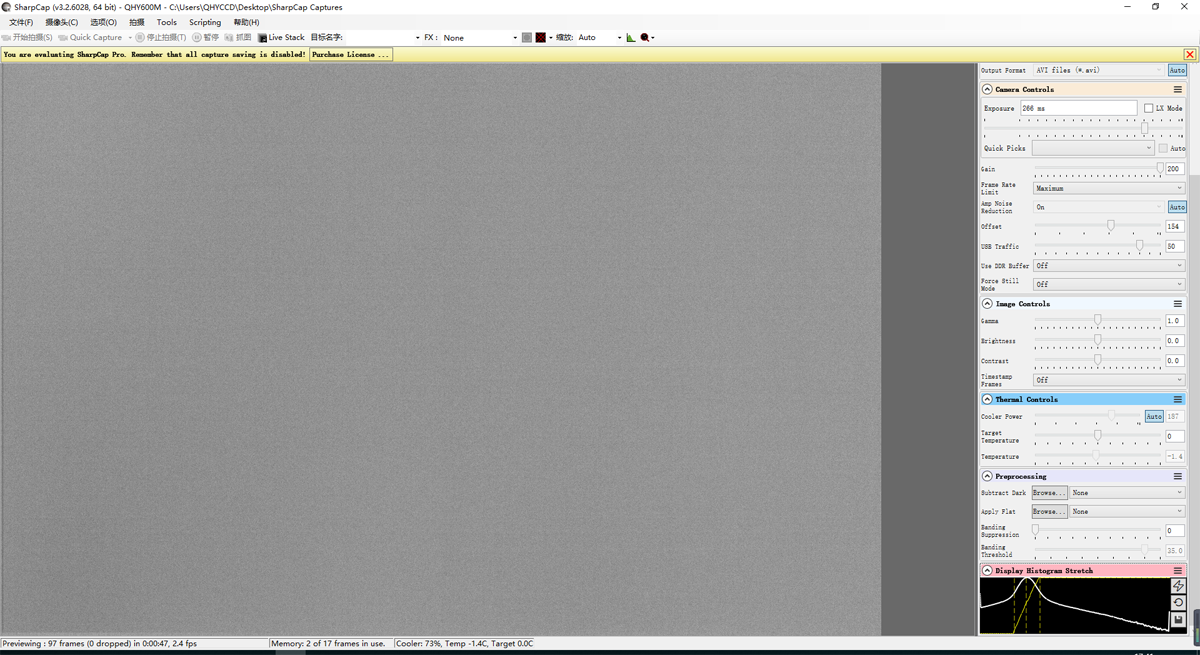QHY600M - Why?

The QHY600M and its sister camera the 600 Pro use the new Sony IMX455 Sensor. This 24mm x 36mm 'Full Frame' (FX/35mm format) sensor has taken the astrophotography world by storm. Never before has such a large sensor offer a combination of high sensitivity, wide dynamic range, low noise AND low cost. It is easy to understand why cameras with this sensor have become so popular. However the QHY600M and 600Pro models standalone in being significantly more expensive than cameras using the IMX455 from other companies. Even QHY has a new model, the 600L 'Lite' using the IMX455 which is £1000 less than the 600M. Why should you pay more?
Well, if we just compare the specifications of the new QHY600L to the QHY600M there are some differences. The 600M has double the image buffer memory (2GB vs 1GB). Useful given the 120MB file size, particularly for high cadence imaging. The 600M can also be upgraded to water cooling, or fitted with a GPS card or even to the full PRO version with its fibre connection and high frame rate. However for normal use all these extras are perhaps of no consequence. The extra memory is certainly a benefit but on its own does not justify £1000.
So why all the fuss? The QHY600M series uses the Industrial 'K' Grade version of the Sony IMX455 as opposed to the 'C' Commercial Grade but on paper, both options seem to work the same. Well, maybe not....
A general explanation of the benefits to the K versus C is perhaps best highlighted by the company Framos. Framos is company that for nearly 40 years has offered sensor solutions as both a supplier and consultancy. Of particular relevance is their close working relationship with Sony. On the subject of Industrial and Commercial Grade sensors, Framos comment as follows (taken from https://www.framos.com/en/products/sensors/consumer-sensors/ )
Similar to area scan sensors, images produced by consumer grade sensors, provide a fast, high-resolution capture of the entire field of view. The main difference between them and industrial grade ones is that consumer sensors have a shorter life span, a shorter mean time before failure (MTBF) and, as a result, may cost much less than an equivalent industrial grade sensor.
If you have a product that needs to be guaranteed for a long time, have a consistent image between each vision product, or if you need it to last for several years versus just one year you will want to consider an industrial area sensor instead. If you are purchasing hundreds of thousands of sensors per year and you have satisfied the other requirements, then consumer sensors may be the right choice for your application
So, we can see that if you want to ensure longevity and consistant performance, an industrial sensor has at least this advantage, but is that all? No!
Industrial sensors have a superior 'package' to commercial versions. The Land Grid Array package (LGA) is basically the sensor housing. With industrial sensors this is made of different materials that minimise thermo mechanical stress. This is significant as CMOS sensors typically operate at extremes, running hot in general use to which cooling then requires them to operate in extreme sub zero conditions. The improved materials of the LGA package allow more consistant operation over a wide temperature range which is partly why there is improved longevity with Industrial sensors.
In addition, an Industrial sensor represents the 'cream' of the crop in a production sense, having less pixel defects, in much the same way that there were differences with Grade 1 and 2 CCD sensors in the past. Defects can be dealt with through calibration but as with the old CCD generation, as time passes, defects do not reduce!
Therefore, by investing in a 'K' grade sensor, you can expect your camera sensor to have a longer lifespan, be consistant and offer improved performance compared to the C grade. When combined with the other features of the QHY600M, the premium is justified as would be expected for a higher specification camera.
What about the QHY600L and its competitors? Should we bother? Of course. The QHY600M offers specific advantages and certainly for use for Science Related or Remote installations, where longevity is key, we would recommend an industrial grade product. This is no different to all the other components we specify for a situation where reliability is key. However for local use and less frequent operation where the demands will be less, a C Grade chipset makes perfect sense. So why is the QHY600L the best choice, price aside?
QHY's implementation of the IMX455 series is unique. Firstly, they have provided a significant Image Buffer, even in the 600L. Compared to a camera like ZWO's ASI6200 which has only 256MB of Image Buffer, the 600L has 1GB and the 600M 2GB. With each frame being around 120MB, this means that in practice, at higher frame rates, the 600L can provide arround 3 seconds of buffer (assuming 2.5FPS) whereas this amount of data per second (approx 300MB) has already filled the ASI6200's buffer. This results in a loss of data. Now you may say you will never run the camera at 2.5FPS. That is fair, but more likely your PC will sometimes take time before it can download an image because the CPU is busy. In this case the same advantage applies.
With the 600L, QHY have further developed the capabilities of the IMX455. In common with many sensors, the IMX455 exhibits random horizontal noise when used at very high gain. This noise can become quite visible as shown below

By optimising the implementation of the sensor, QHY have been able to remove this artifact, resulting in almost no noise being visible as shown below

Ultimatley the 600 series cameras from QHY offer a significantly superior implementation of the ground breaking Sony IMX455 that other manufacturers. Whichever model you choose, you can be assured the performance will be outstanding and the value incomparable.
